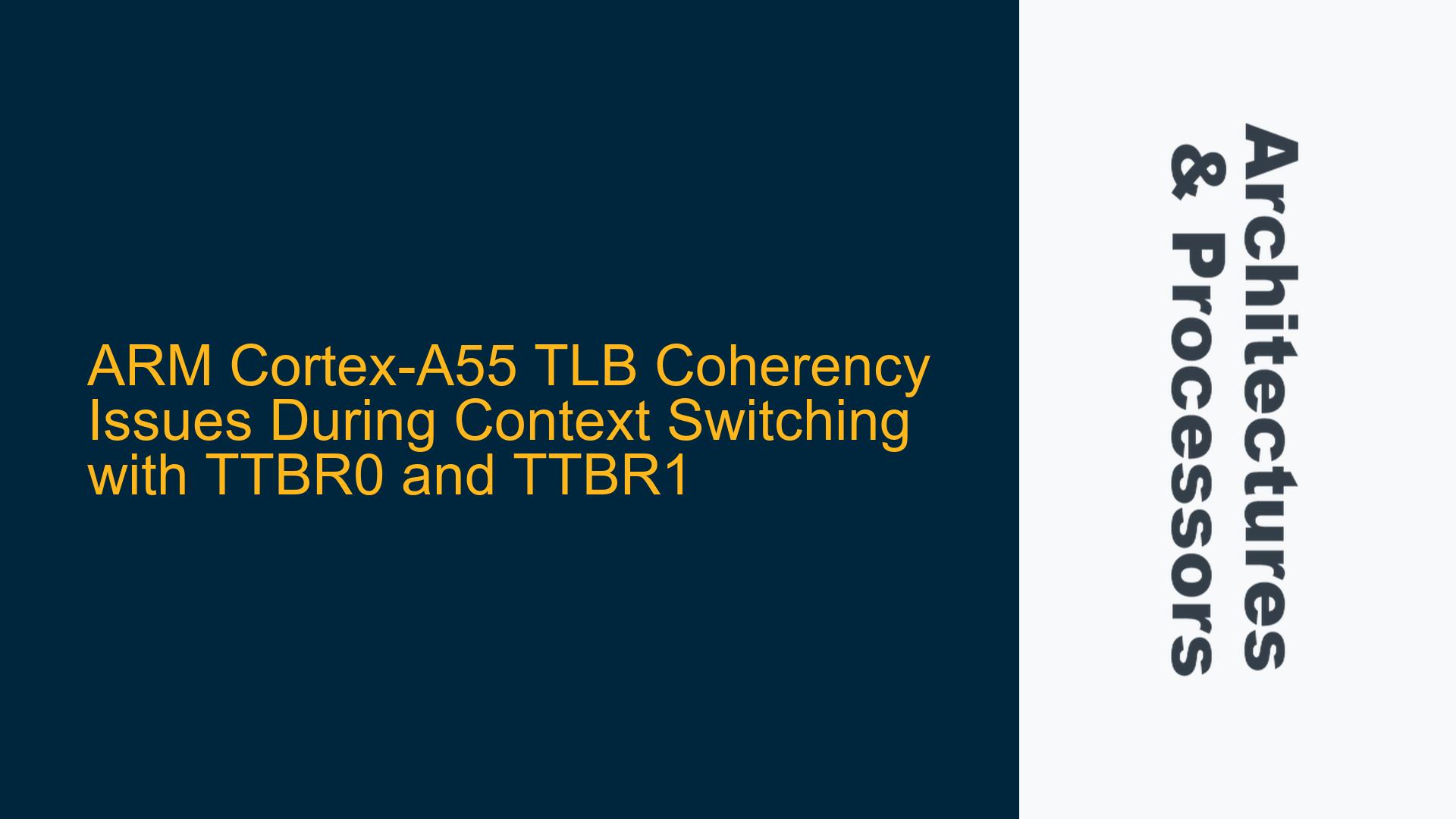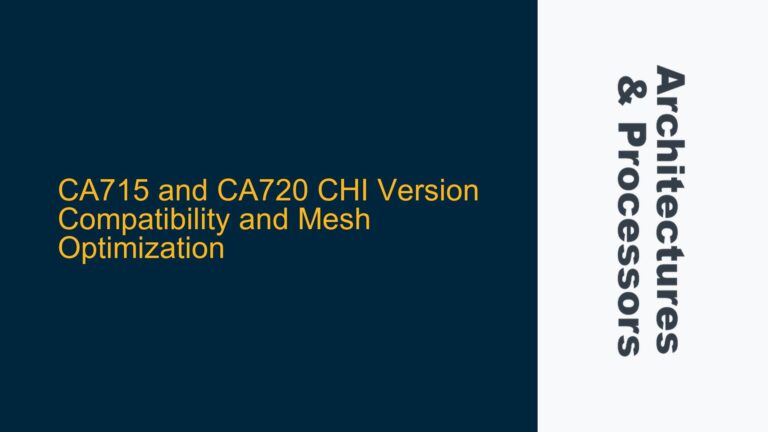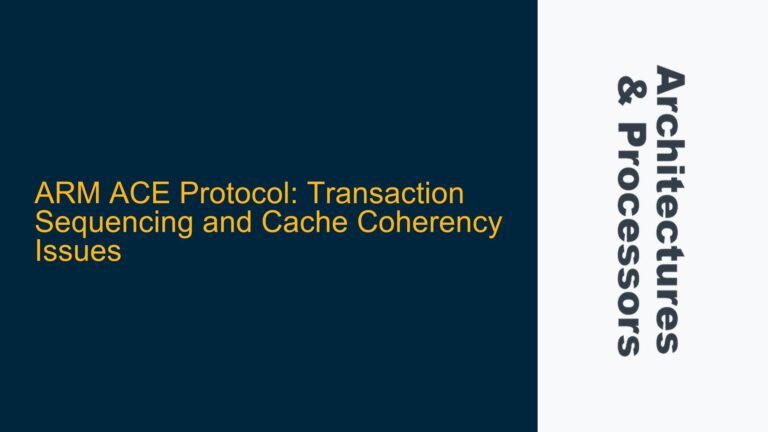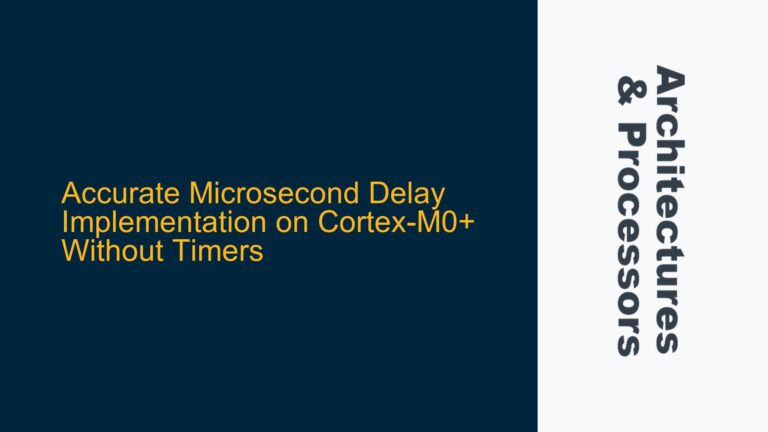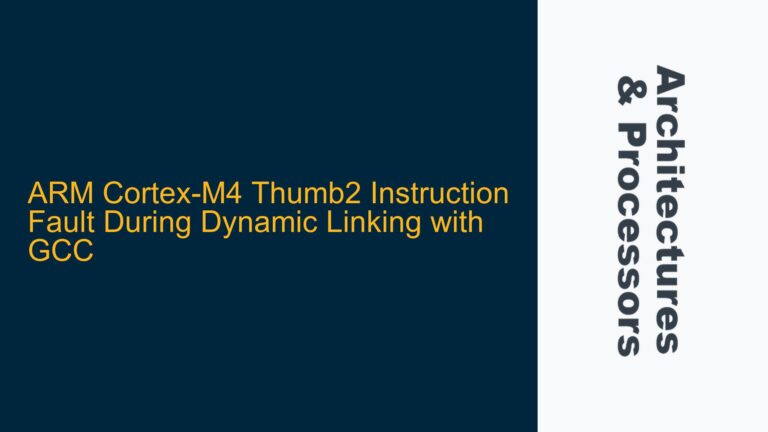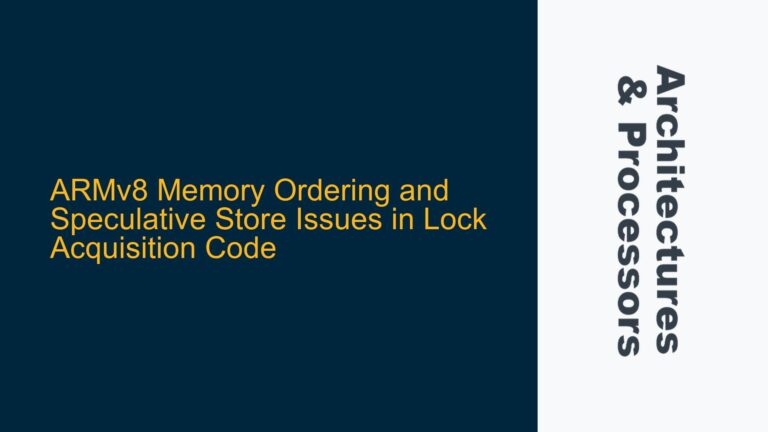ARM Cortex-A55 TLB Coherency Issues During Context Switching with TTBR0 and TTBR1
In ARMv8-based systems, particularly those utilizing the Cortex-A55 processor, context switching between processes often involves managing Translation Lookaside Buffer (TLB) coherency when updating the Translation Table Base Registers (TTBR0 and TTBR1). The TLB is a critical component of the memory management unit (MMU) that caches virtual-to-physical address translations to accelerate memory access. However, improper handling of TTBR0 and TTBR1 during context switching can lead to TLB coherency issues, resulting in incorrect address translations and memory access violations. This issue is particularly pronounced in real-time operating systems (RTOS) where rapid context switching is common.
The core problem arises when the Address Space Identifier (ASID) stored in TTBR1 is updated, but the hardware prefetches the page table content of TTBR0 before the new TTBR0 value is written. This results in a mismatch where the new ASID corresponds to the old application page table base address, causing the current process to access memory belonging to another process. This behavior is exacerbated under stress testing conditions, where frequent context switches amplify the likelihood of TLB coherency violations.
ASID Mismatch Due to TTBR0 Prefetching and TCR_EL1 Configuration
The root cause of the TLB coherency issue lies in the interaction between the ASID, TTBR0, TTBR1, and the Translation Control Register (TCR_EL1). In the described scenario, the ASID is stored in TTBR1, while the base address of the application page table is stored in TTBR0. During context switching, the following sequence of events occurs:
- The ASID in TTBR1 is updated to reflect the new process context.
- Before the new TTBR0 value is written, the hardware prefetches the page table content associated with the old TTBR0 value.
- The new TTBR0 value is written, but the prefetched page table content is already cached in the TLB with the new ASID.
- This results in a situation where the new ASID corresponds to the old application page table base address, leading to incorrect memory access.
The issue is further compounded by the configuration of TCR_EL1, specifically the EPD0 (Enable Pointer Disable for TTBR0) bit. When EPD0 is set, the MMU disables the use of TTBR0 for address translation, effectively disabling the TLB for TTBR0. However, if EPD0 is not managed correctly during context switching, the TLB may still cache stale translations, leading to coherency issues.
Implementing Atomic ASID Updates and TCR_EL1 Management
To resolve the TLB coherency issue, two primary solutions can be implemented: atomic ASID updates and proper management of TCR_EL1. Both approaches aim to ensure that the TLB does not cache stale translations during context switching.
Atomic ASID Updates
One effective solution is to place the ASID in TTBR0 as an atomic operation. This approach ensures that the ASID and the application page table base address are updated simultaneously, preventing the hardware from prefetching stale page table content. The modified code sequence for atomic ASID updates is as follows:
cpu_do_switch_mm:
mrs x2, ttbr1_el1
bfi x2, x1, #48, #16 // Update ASID in TTBR1
msr ttbr1_el1, x2
isb
msr ttbr0_el1, x0 // Update TTBR0 with new page table base address
isb
By updating TTBR0 and TTBR1 in a single atomic operation, the hardware is prevented from prefetching stale page table content, ensuring TLB coherency.
TCR_EL1 Management
Another solution involves managing the TCR_EL1 register to disable and re-enable TTBR0 during context switching. This approach ensures that the TLB does not cache translations from TTBR0 while the ASID and page table base address are being updated. The modified code sequence for TCR_EL1 management is as follows:
cpu_do_switch_mm:
mrs x2, ttbr1_el1
bfi x2, x1, #48, #16 // Update ASID in TTBR1
mrs x1, tcr_el1
orr x1, x1, #TCR_EPD0_MASK // Disable TTBR0
msr tcr_el1, x1
msr ttbr1_el1, x2
isb
msr ttbr0_el1, x0 // Update TTBR0 with new page table base address
mrs x1, tcr_el1
and x1, x1, #TCR_EPD0_MASK_NOT // Re-enable TTBR0
msr tcr_el1, x1
isb
By disabling TTBR0 before updating the ASID and page table base address, and then re-enabling TTBR0 afterward, the TLB is prevented from caching stale translations, ensuring coherency during context switching.
Comparison with Linux Implementation
The Linux kernel addresses this issue by setting an empty page table for TTBR0 before performing a context switch. This approach ensures that the TLB does not cache any translations from TTBR0 during the switch, preventing coherency issues. The Linux implementation can be summarized as follows:
- Set an empty page table for TTBR0.
- Perform the context switch, updating TTBR1 and TTBR0 as needed.
- Restore the original page table for TTBR0 after the switch.
This method effectively prevents the TLB from caching stale translations, ensuring coherency without requiring additional TLB flushes.
Conclusion
TLB coherency issues during context switching on ARM Cortex-A55 processors can be resolved through careful management of TTBR0, TTBR1, and TCR_EL1. By implementing atomic ASID updates or properly managing TCR_EL1, developers can ensure that the TLB does not cache stale translations, preventing memory access violations. Additionally, the Linux approach of setting an empty page table for TTBR0 provides an alternative solution that avoids the need for TLB flushes. These techniques are essential for maintaining system stability and performance in RTOS environments with frequent context switches.
